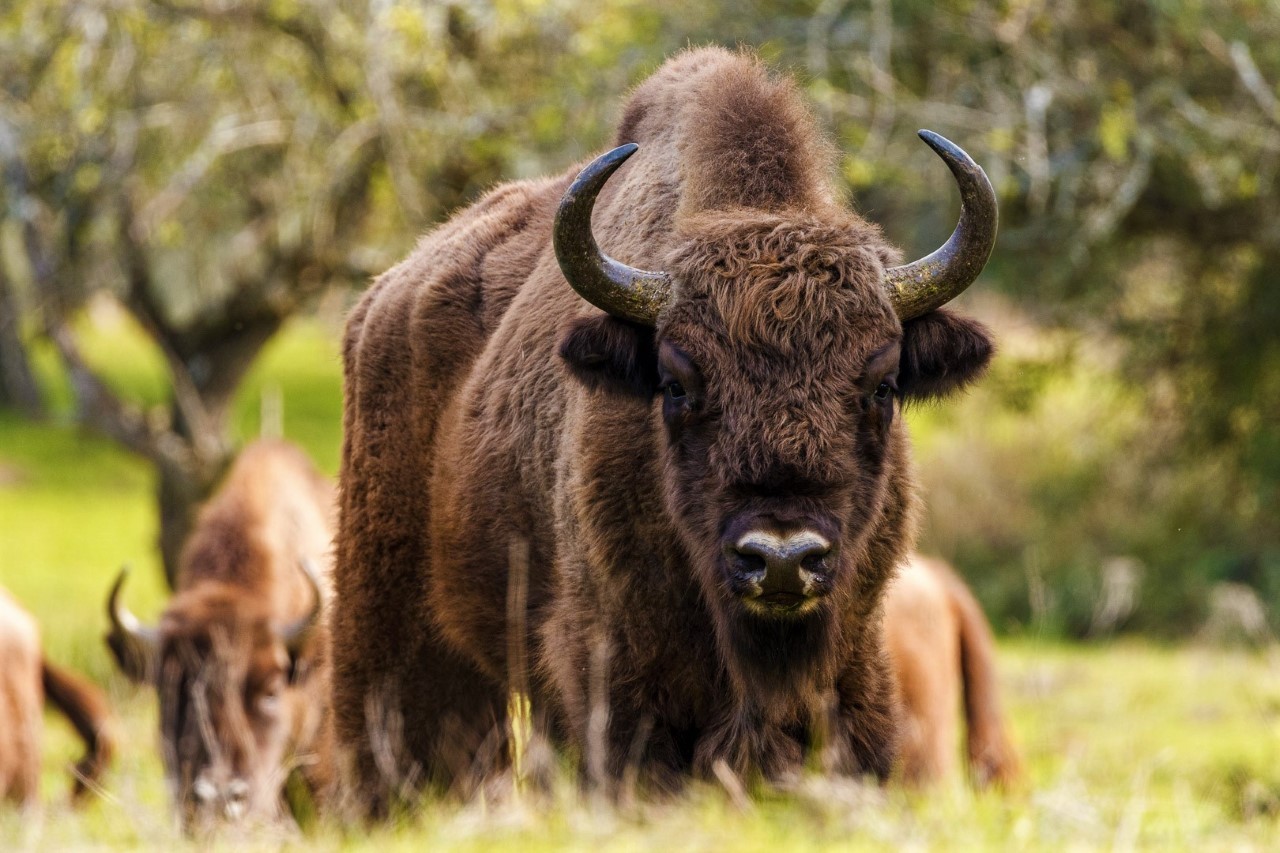Introduction
bisonte, often referred to as the symbol of the American West, hold a profound significance in both ecological and cultural realms. These magnificent creatures, once roaming in vast herds across North America, have a rich history deeply intertwined with indigenous cultures, early settlers, and the natural landscape. In this article, we delve into the world of bison, examining their biology, historical role, conservation efforts, and cultural significance, while also shedding light on their ecological importance and the challenges they face in the modern world Bisonte.
Bison Biology and Ecology
Bison, scientifically known as Bison bison, are the largest land mammals in North America, distinguished by their massive size, shaggy coats, and distinctive humped shoulders. These herbivores play a crucial role in shaping grassland ecosystems through their grazing habits, which promote the growth of diverse plant species and maintain the health of prairie landscapes. Bison are highly adaptable animals, capable of thriving in a variety of habitats, from open plains to densely forested areas. They exhibit complex social behaviors, forming tight-knit family groups led by dominant bulls and communicating through vocalizations, body language, and scent marking Bisonte.
Historical Role of Bisonte in North America
For thousands of years, Bisonte have been an integral part of indigenous cultures in North America, serving as a vital source of food, clothing, shelter, and spiritual connection. Indigenous peoples revered the bison as sacred beings, honoring their strength, resilience, and contributions to tribal life. Bison also played a pivotal role in shaping the history of the American West, with European settlers exploiting their vast herds for profit, leading to widespread overhunting and near extinction by the late 19th century. The decimation of bison populations had far-reaching ecological consequences, disrupting ecosystems and threatening the survival of countless species dependent on bison habitats.
Bison Conservation Efforts
In the face of near extinction, concerted efforts were made to rescue Bisonte from the brink of oblivion. Bisonte recovery programs, such as those initiated by conservation organizations, national parks, and indigenous tribes, have helped restore populations to sustainable levels and preserve genetic diversity. Bisonte conservation efforts have also focused on habitat restoration, captive breeding, and public education to raise awareness about the importance of preserving these iconic creatures. Despite significant progress, bison still face numerous threats, including habitat loss, disease, climate change, and conflicts with human activities, underscoring the ongoing need for vigilance and proactive conservation measures.
Bison in Modern Times
Today, bison continue to captivate the public imagination, serving as symbols of resilience, strength, and wilderness. Bison ranching has emerged as both a commercial enterprise and a conservation strategy, with ranchers raising bison for their meat, hides, and ecological benefits. Bisonte meat, prized for its lean, flavorful taste and nutritional value, has gained popularity among health-conscious consumers seeking sustainable protein sources. Bison tourism has also flourished, with eco-tourists flocking to national parks and wildlife reserves to catch a glimpse of these majestic creatures in their natural habitats.
Bison Management and Policy
Effective bison management requires a multifaceted approach that balances the needs of bison populations with those of other stakeholders, including ranchers, landowners, indigenous communities, and government agencies. Government regulations play a crucial role in protecting Bisonte habitats, managing public lands, and mitigating conflicts between bison and human activities. Indigenous perspectives on bison management emphasize cultural preservation, sustainable practices, and community engagement, highlighting the importance of incorporating traditional knowledge and values into conservation policies. Public and private initiatives are also essential for supporting bison conservation efforts, fostering collaboration, and mobilizing resources to address pressing challenges.
Cultural Significance of Bison
Beyond their ecological importance, Bisonte hold deep cultural significance in the hearts and minds of people around the world. Bison have inspired artists, writers, and filmmakers to create works that celebrate their beauty, strength, and symbolic power. From Native American legends to contemporary art exhibitions, bison continue to be a source of inspiration and creativity. Bison symbolism permeates popular culture, appearing in literature, music, and advertising as a symbol of freedom, endurance, and the untamed wilderness. Bison festivals and celebrations, such as Bison Days and National Bison Day, provide opportunities for communities to come together and honor these iconic animals, reinforcing their place in our collective consciousness.
Bison and Climate Change
As climate change accelerates, Bisonte are facing new challenges to their survival, including habitat loss, altered migration patterns, and increased competition for resources. However, bison also possess unique adaptations that make them resilient to environmental changes, such as their ability to withstand extreme weather conditions and their role in enhancing soil health through grazing. Bison conservation efforts must take into account the impacts of climate change and incorporate strategies for mitigating its effects on bison populations and their habitats. By promoting habitat connectivity, preserving natural migration corridors, and implementing sustainable land management practices, we can help ensure the long-term survival of bison in a changing world.
Sustainable Bison Farming Practices
Ethical considerations play a crucial role in bison ranching, with many producers prioritizing animal welfare, environmental stewardship, and sustainable practices. Grazing management is essential for maintaining healthy grasslands and minimizing the ecological footprint of bison ranching operations. Rotational grazing, restorative grazing, and holistic land management approaches can help improve soil fertility, increase biodiversity, and sequester carbon in grassland ecosystems. Supporting indigenous bison ranching initiatives is also key to promoting cultural revitalization, economic empowerment, and environmental conservation in indigenous communities.
Bison in Restoration Ecology
Bison are increasingly recognized as keystone species in restoration ecology, with their presence promoting the health and resilience of grassland ecosystems. Reintroducing bison to their historical ranges can help restore ecological processes, such as nutrient cycling, seed dispersal, and plant succession, that have been disrupted by human activities. Collaborative efforts between conservation organizations, landowners, and indigenous tribes are critical for restoring bison habitats, establishing sustainable grazing regimes, and monitoring ecosystem health. By restoring the balance between bison and their environment, we can create healthier, more resilient landscapes that benefit both wildlife and people.
You read also more : 30 minutes from now is what time
The Future of Bison Conservation
Looking ahead, the future of bison conservation depends on our collective commitment to preserving their habitats, protecting their populations, and promoting coexistence with human communities. Promising trends, such as increasing bison numbers, expanding habitat restoration efforts, and growing public awareness, offer hope for the long-term survival of these iconic creatures. Innovations in bison research, monitoring, and management are also advancing our understanding of bison ecology and informing conservation strategies. By advocating for policy reforms, supporting sustainable practices, and fostering partnerships between stakeholders, we can ensure a brighter future for bisonte and the ecosystems they inhabit.
Conclusion
In conclusion, bisonte, with their majestic presence and profound significance, embody the enduring legacy of North America’s natural heritage. From their ancient origins to their modern-day challenges, bison have captured our imagination and inspired us to protect and cherish the wild places they call home. By honoring their cultural heritage, conserving their habitats, and fostering a deeper appreciation for their ecological importance, we can ensure that future generations will continue to marvel at the majesty of bison and the untamed beauty of the American West





